Nguyen Hue
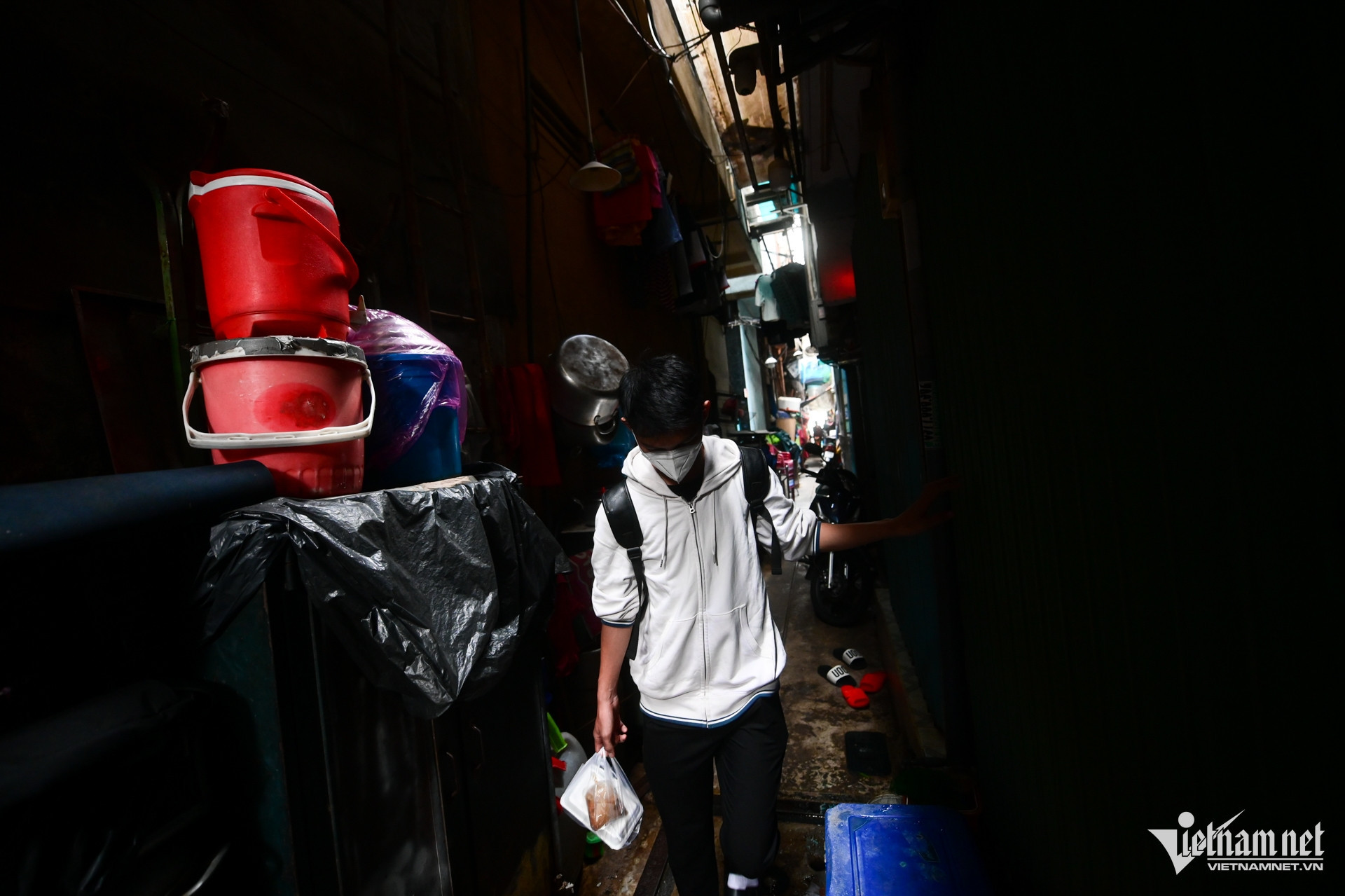
In the densely populated Cau Ong Lanh residential area in Ho Chi Minh City, narrow alleys less than 1m wide crisscross between rows of tiny homes, perpetually shrouded in darkness. Over the years, these cramped pathways have become storage spaces for residents' belongings.
Ong Lanh Bridge, historically known as the Chicken-Rice Market, is strategically located between Yersin, Vo Van Kiet, and Nguyen Thai Hoc streets. Hidden within these narrow lanes are unexpectedly small houses, ranging from 2.5 to 5 square meters in area.
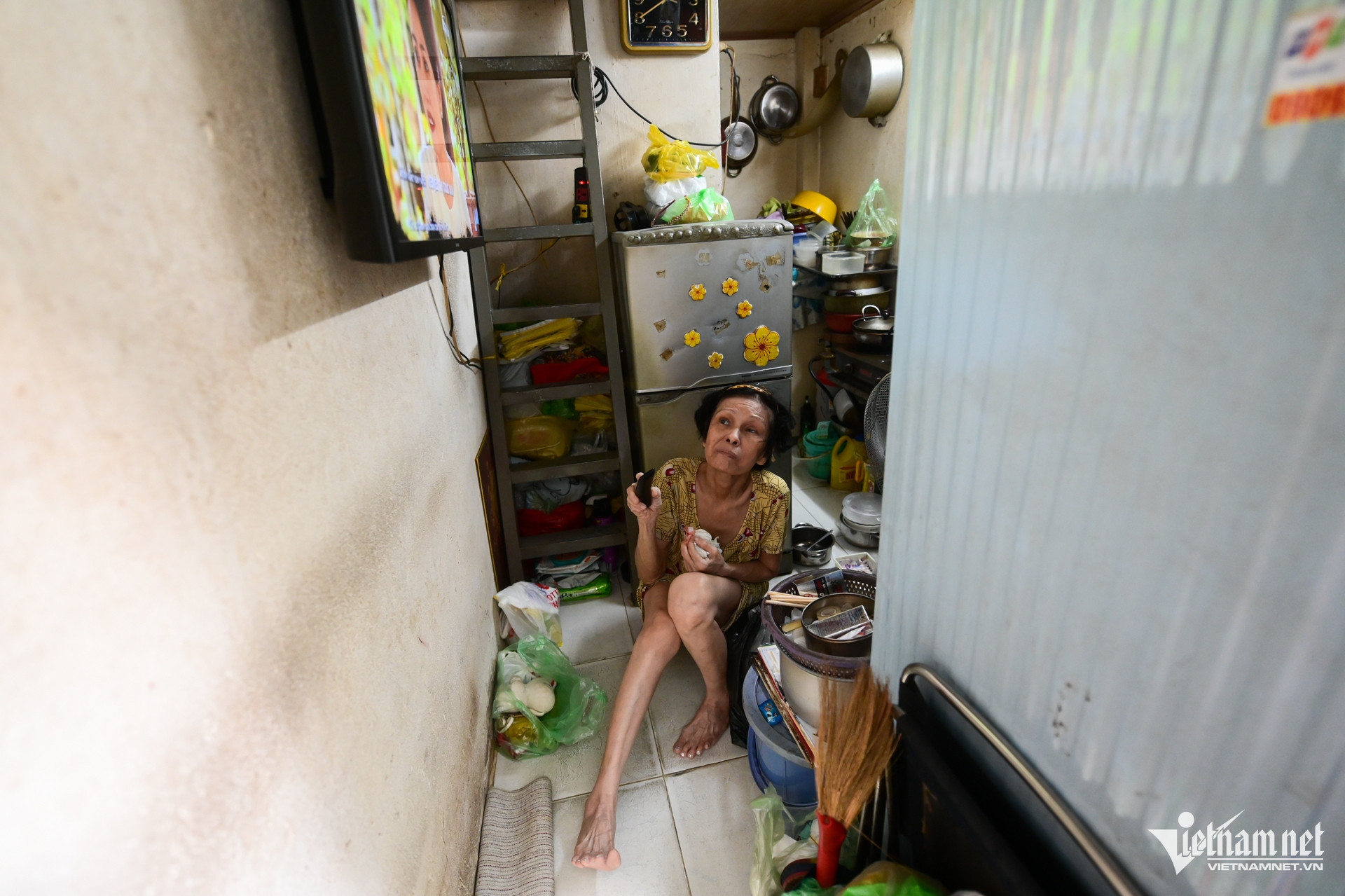
In her 4-square-meter home, Le Thi Kim Thoa, 72, doesn't have enough space to stretch her legs due to the clutter and a metal staircase that takes up most of the room. Her arthritis prevents her from climbing stairs, exacerbating her condition. Consequently, her sleep is never comfortable as she has to curl up.
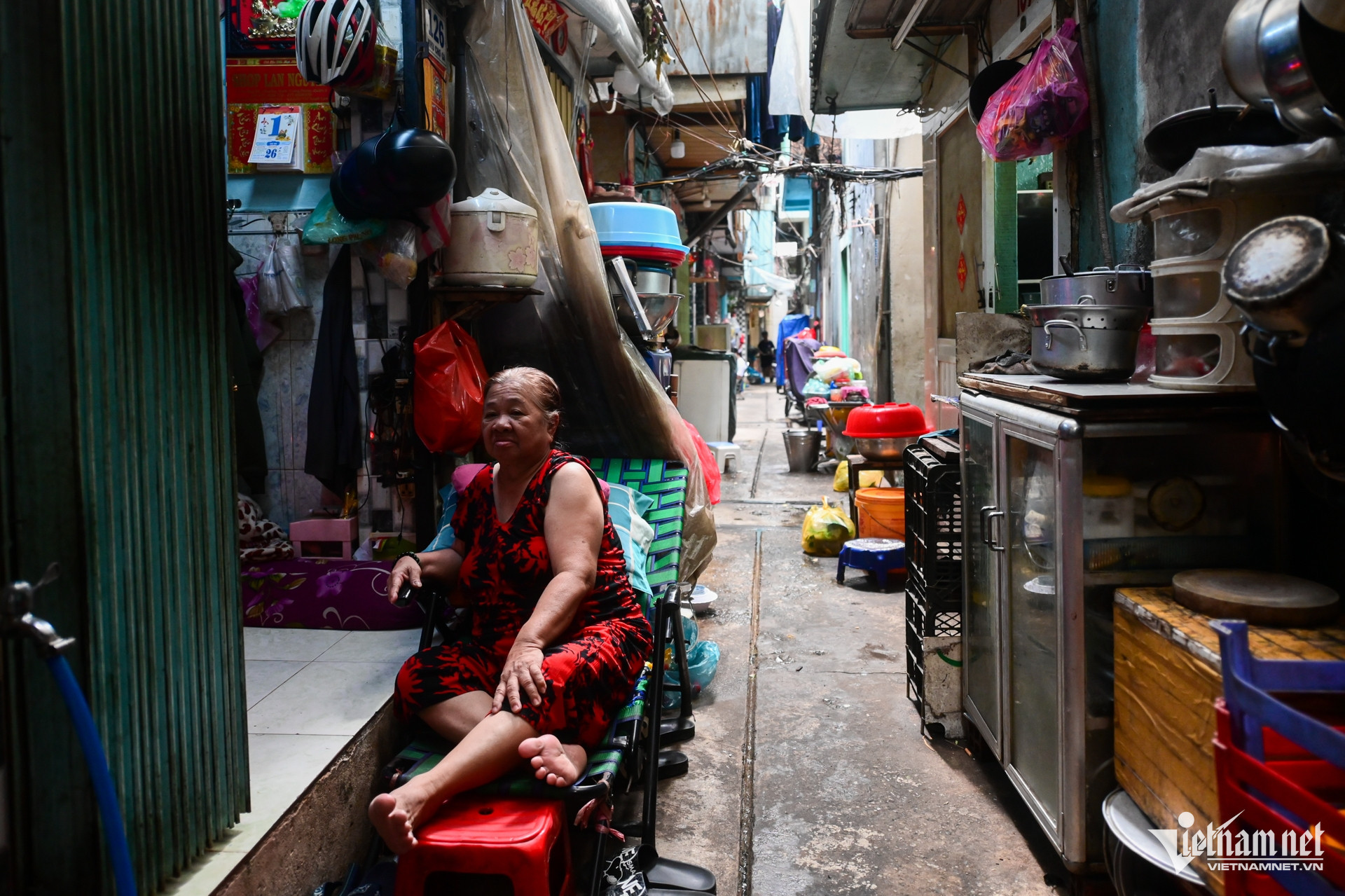
Mrs. Tran Kim Hoang, 69, and her family of six share a home less than 6 square meters, including a ground floor and a mezzanine. During the day, everyone is out working. At night, three people sleep on the mezzanine while the ground floor cannot accommodate the remaining three, necessitating a foldable bed in the walkway outside.
Opposite is a simple outdoor kitchen with shelves and cooking utensils stacked on top of each other. "Because the house is cramped, I have to use the outside space for storage," said Mrs. Hoang.
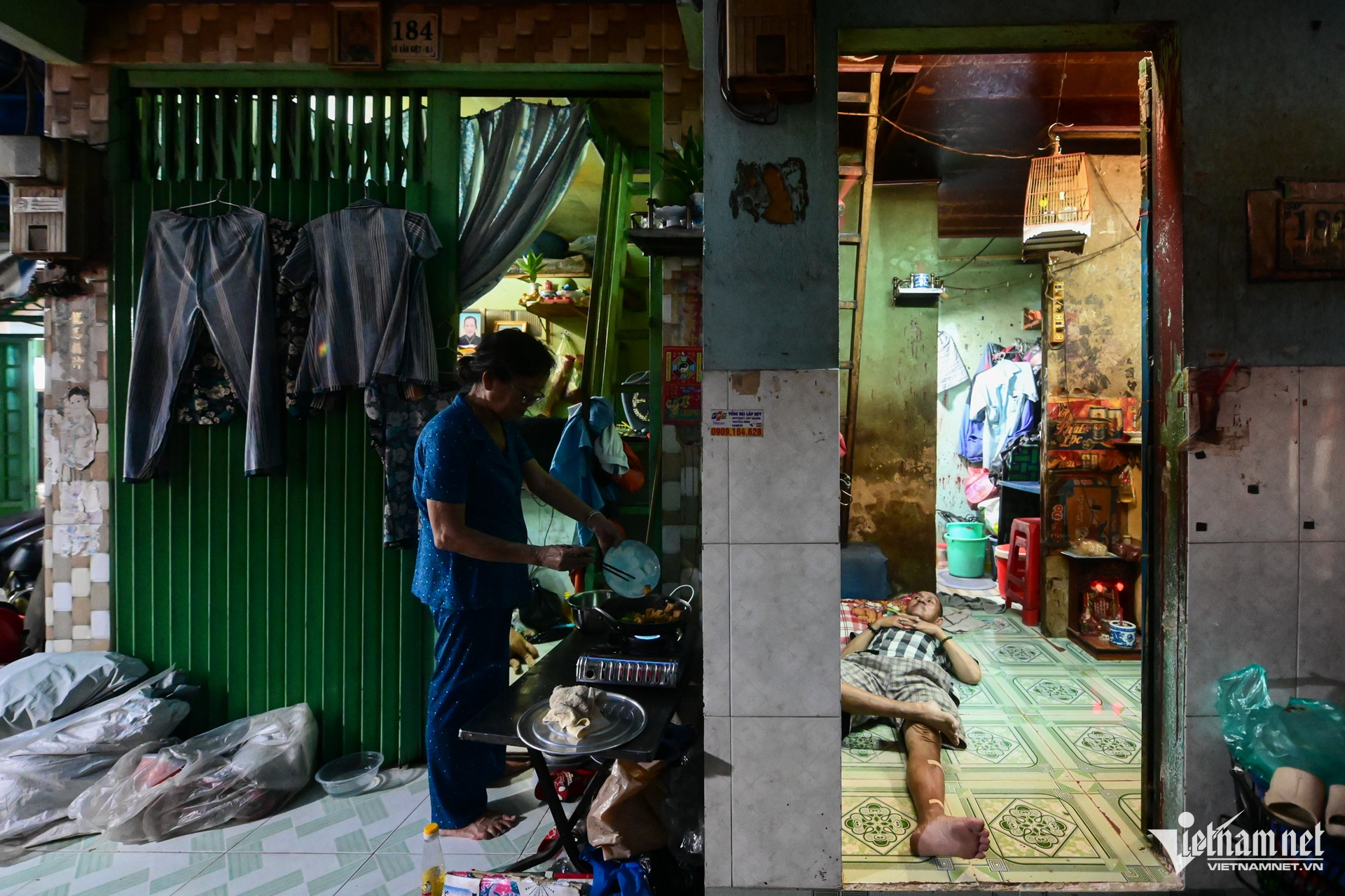
In front of Mrs. Le Thi Ngoc Hoa's 4-square-meter home, the narrow walkway is used for parking, storage, cooking, and dishwashing. Daily life happens right at the doorstep. On rainy days, when cooking becomes impossible, the family of four often resorts to eating plain rice with tofu. This situation is common for nearly 300 households in the Cau Ong Lanh area.

Mrs. Tran Thi Le, 63, cooks with a mini gas stove set up in the alley in front of her 7.5-square-meter house. "Life has always been challenging, but having a home of our own to shelter from the sun and rain, and a place to earn a living is a blessing," she says. Le also mentions that before 2015, most houses were dilapidated shacks made of wood, corrugated iron, and thatch. The concrete structures are now a significant improvement.
To ensure safety, Le keeps her belongings neat and tidy, optimizing the available space. She sets up her stove in the alley to minimize electrical appliance use inside the house, reducing fire hazards.
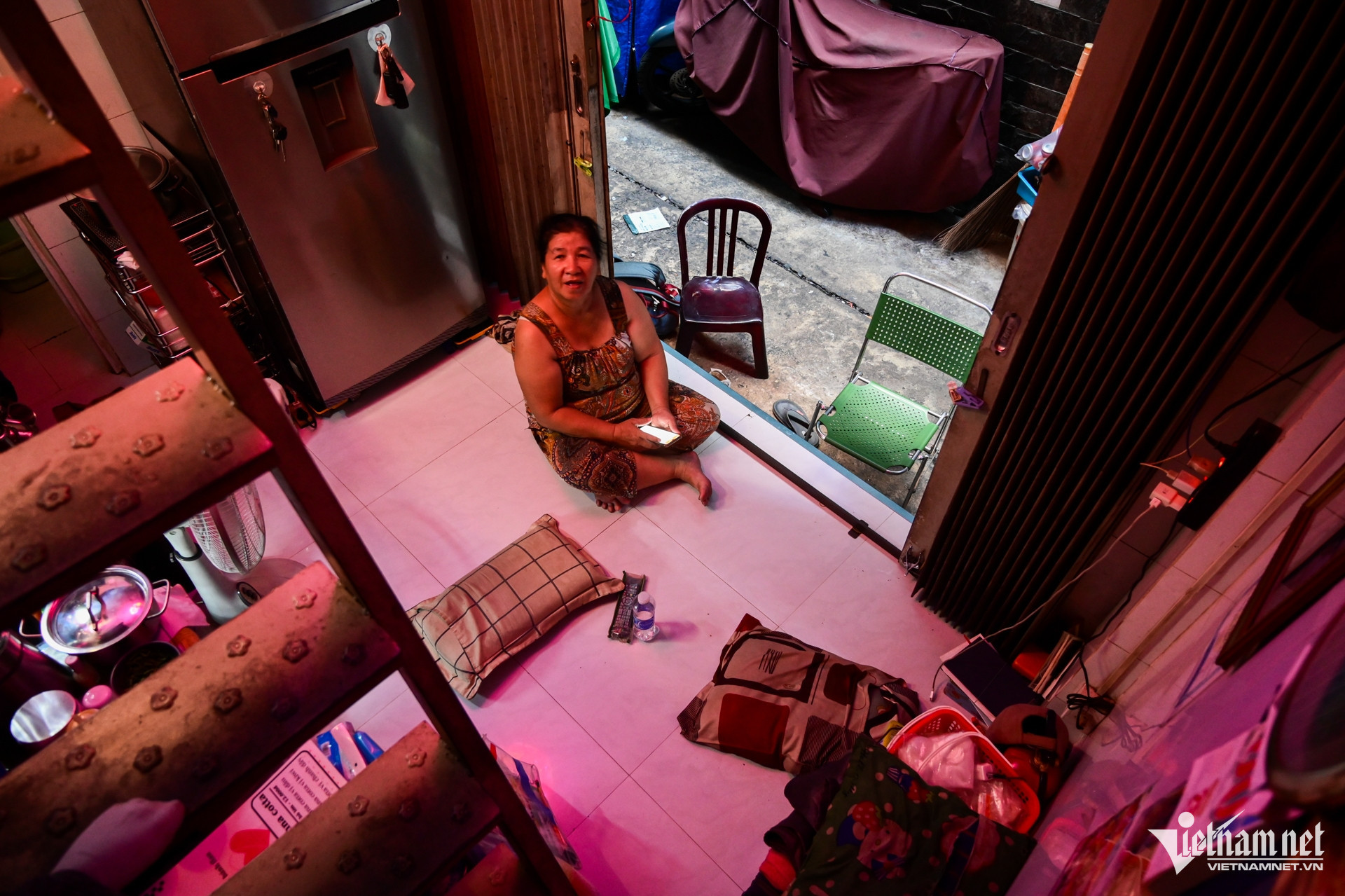 |
 |
Outside Mrs. Nguyen Thi Kim Vang's house, two chairs are always placed for her grandchildren to watch TV or for neighbors to sit and chat.
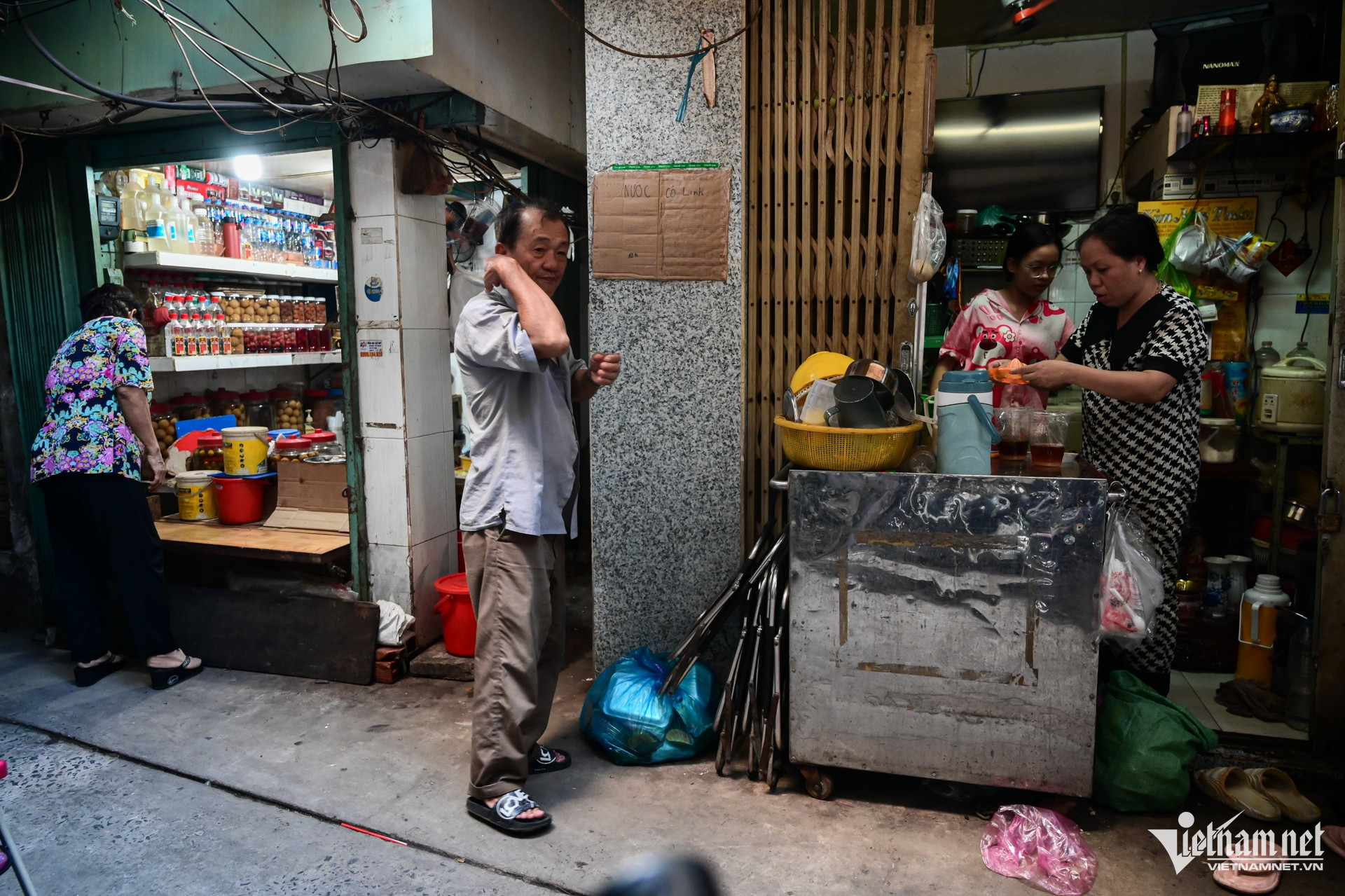
Born and raised in the Chicken-Rice Market area, Tran Le Thuy Linh now rents a 6-square-meter house for her small family and her beverage stall. "Our old house now only accommodates my parents. With more people and the house staying the same, renting a separate place became necessary," she explains.
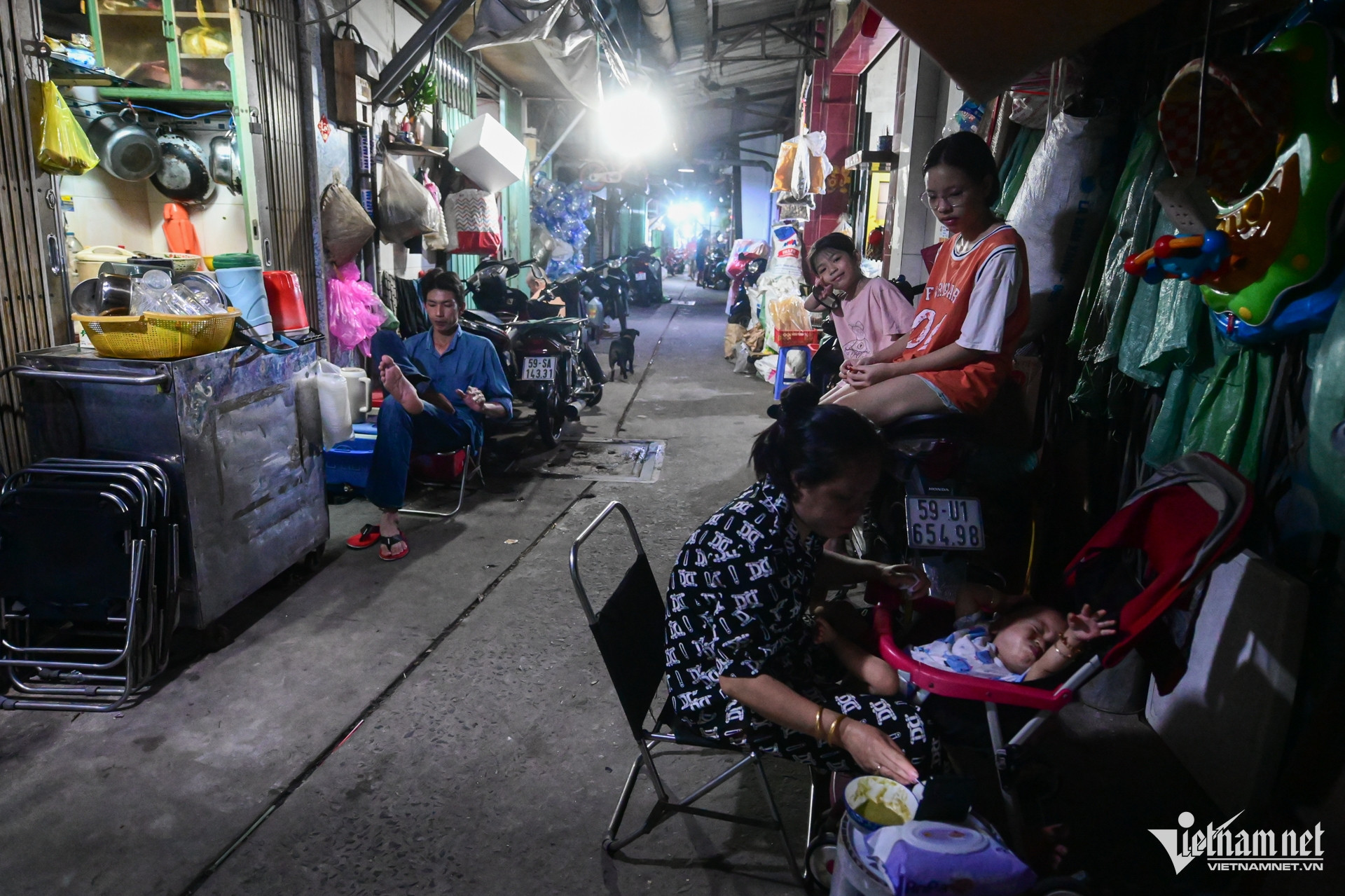
At 6 PM, after dinner, Linh's family sat outside in the alley to relax, only going inside to sleep. On hot summer nights, when it becomes unbearable to sleep indoors, she wakes up in the middle of the night to take a walk by the riverside to cool down before returning to bed. "If there's a redevelopment plan and we have to relocate, I worry about where we'll live, what we'll do, and if we'll be able to continue our business. My children are also settled in school here," she shares.
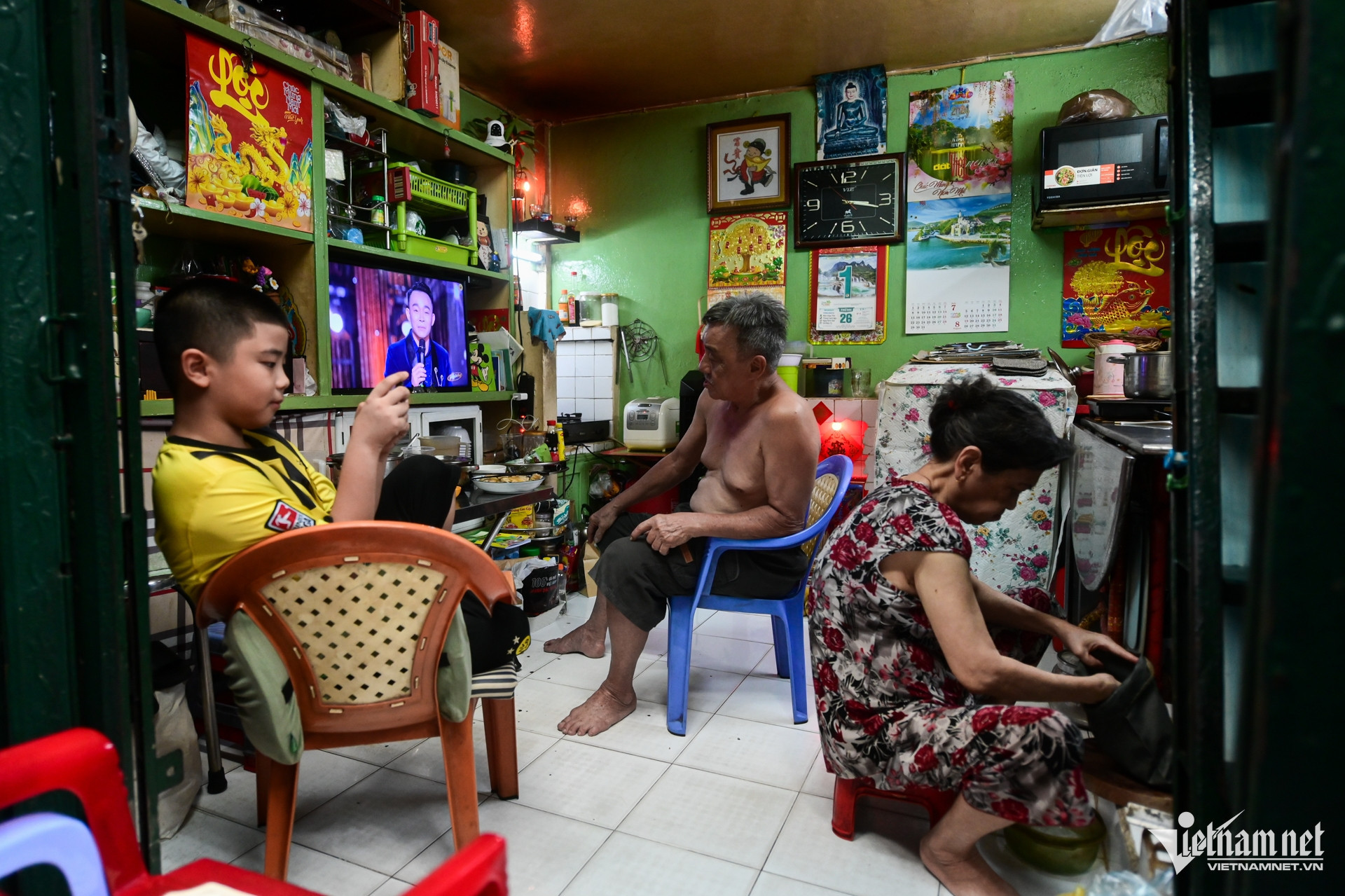
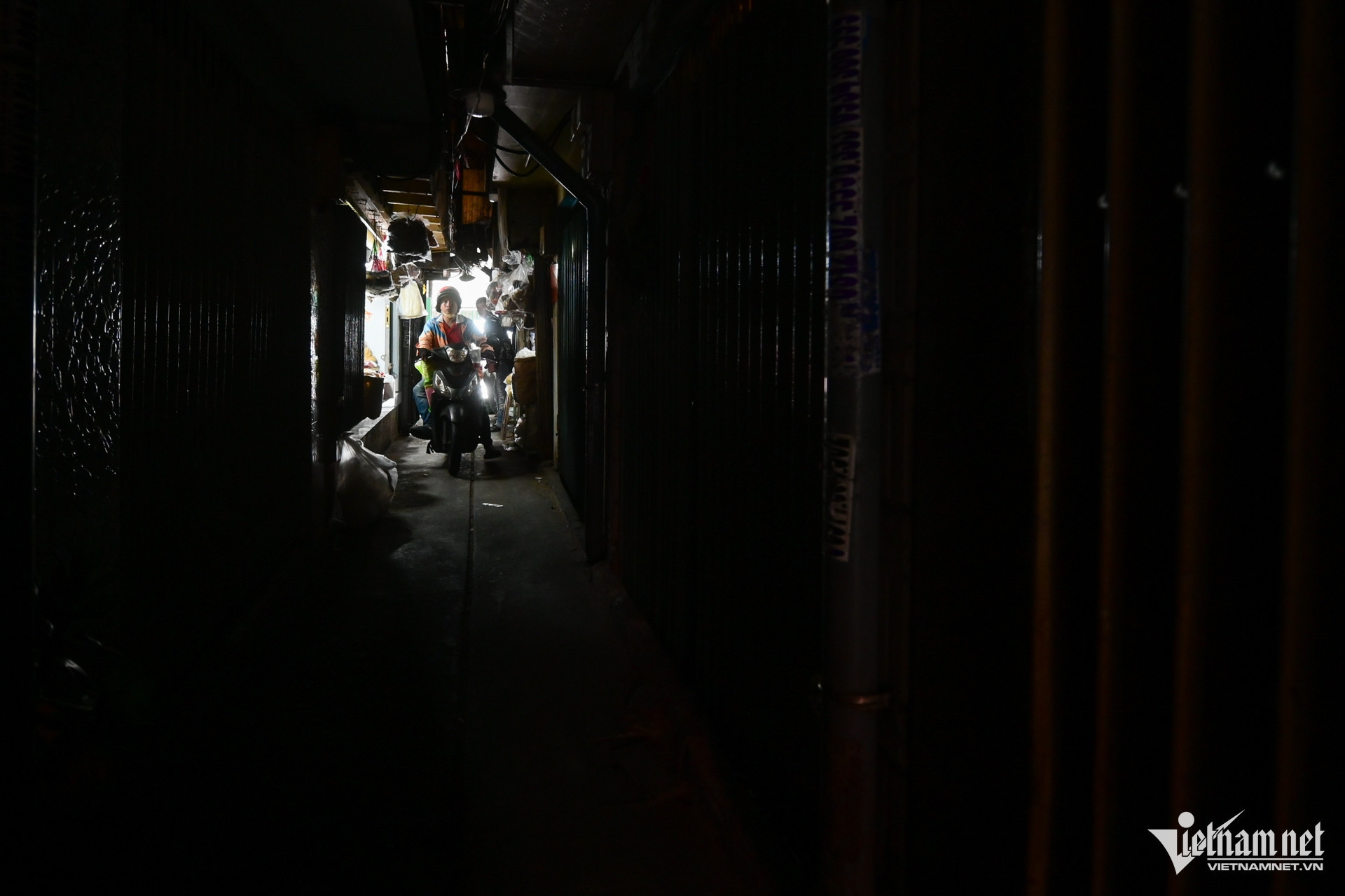 |
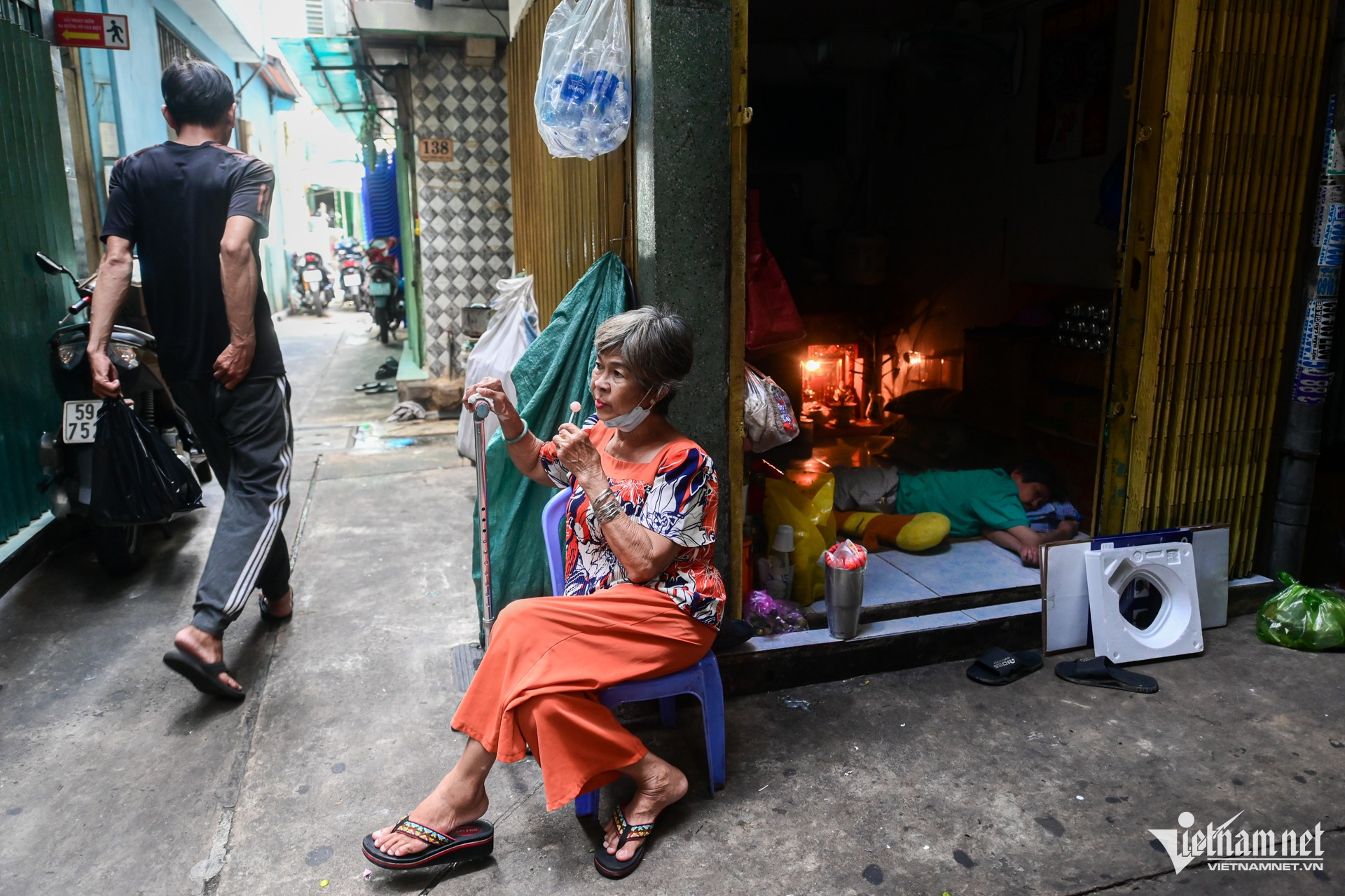 |
Many residents of Cau Ong Lanh have no intention of leaving. Despite the cramped and stuffed conditions, these homes have been part of their lives for generations. The close-knit community, where neighbors see each other daily, fosters strong bonds and understanding.
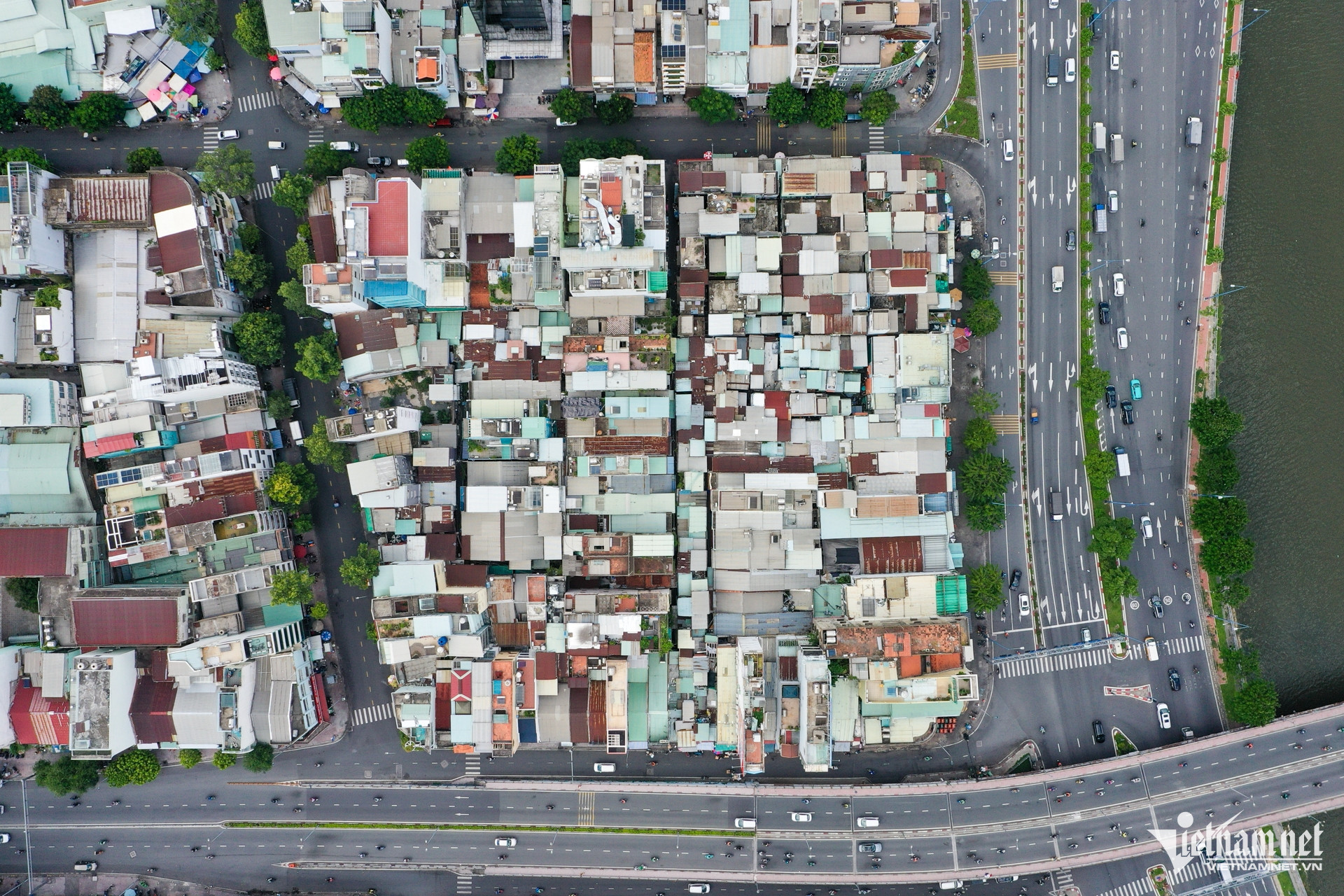
Once a traditional market with stalls before 1975, many of these kiosks in Cau Ong Lanh have now been converted into tiny homes, some as small as 2-3 square meters.
Ho Chi Minh City is working on urban renewal projects to address the living conditions in these "matchbox" houses in Cau Ong Lanh. According to the People's Committee of District 1, the Chicken-Rice Market project covers an area of 6,339 square meters, with a planned area of 5,949 square meters. The maximum building density is set at 50%, with a floor area ratio of 10, a maximum height of 50 meters, and a population cap of 700 people.